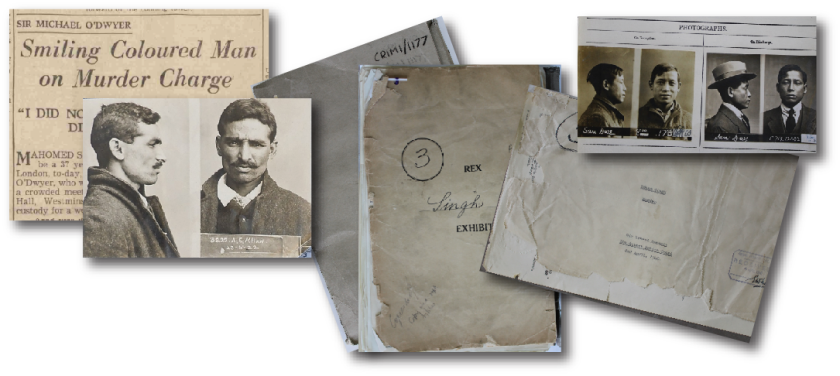While same-sex sexual activity is no longer criminalised in much of the Western world, and acceptance of lesbian, gay, bisexual, and transgender (LGBT) people is growing, full equality for LGBT people before the law and criminal justice systems remains elusive.

Dr Matthew Ball, Crime and Justice Research Centre, Queensland University of Technology
While same-sex sexual activity is no longer criminalised in much of the Western world, and acceptance of lesbian, gay, bisexual, and transgender (LGBT) people is growing, full equality for LGBT people before the law and criminal justice systems remains elusive. Taking stock of some of these inequalities in Australia, the USA, and the UK reveals some startling insights into the extent of this inequality, and highlights where criminal justice practitioners, governments, and communities must continue to fight for change.
The ‘Bathroom Bills’ recently proposed in some US states are clear examples of recent attempts to reinforce legal inequality. These laws intend to force people to use public bathrooms that match the sex on their birth certificate, whether or not this aligns with their gender identity. These laws specifically (and deliberately) intend to expose transgender people to possible legal sanctions simply for using facilities that align with their gender, and force them to use facilities in which they may be at risk of violence. In Queensland, Australia, the homosexual advance (or ‘gay panic’) defence was only removed in March 2017. This legal defence allowed murder charges to be reduced to manslaughter if the deceased ‘made a pass’ at the perpetrator, to which the perpetrator reacted violently. This was an acceptable legal defence for a gay hate crime – one that South Australia has yet to remove. These laws play on old ideas that LGBT people are deceptive or predatory, and pose a threat, whether to children or heterosexuality.
While governments have recently expunged the criminal records of those convicted under sodomy laws, and issued formal apologies to LGBT people for government and police behaviour, for many LGBT people, the damage to their lives has been done. They may have lost jobs – or been unable to apply for others – because of their criminal record. In some jurisdictions, despite having had consensual sex with another adult who just happened to be the same sex, they may have had to register as a sex offender. The historic criminalisation of LGBT people thus casts a long shadow.
It might be less surprising that LGBT people remain the victims of some truly horrific hate crimes. The recent murders of fourteen-year-old Giovanni Melton and eight-year-old Gabriel Fernandez, allegedly committed by their fathers who feared having gay sons, highlight the extreme family violence often directed at LGBT people. Hate-motivated violence from strangers also remains a significant issue. For example, while there is debate over whether to classify the 2016 mass shooting at the Pulse nightclub in the US as a terrorist attack or hate crime, the fact remains that most of the 49 victims were Latino LGBT people.
These are certainly extreme events and receive significant media coverage. However, the everyday forms of victimisation that LGBT people experience often remain overlooked. In Australia, it has taken recent debates over marriage equality and the Safe Schools anti-bullying program to expose the largely invisible undercurrent of homophobia and transphobia impacting on LGBT people. This has been lent some political legitimacy by prominent politicians such as former Prime Minister Tony Abbott, who has very publicly stated that ‘It’s OK to say No’ to marriage equality. This has also limited progress in other areas where LGBT people experience significant victimisation. Evidence suggests that LGBT people experience domestic violence and ‘revenge porn’-related offences just as much, or at higher rates, than non-LGBT people, and yet this research has not translated into visible public campaigns to address these offences.
A key aspect of the inequalities experienced by LGBT people in the criminal justice system is their interactions with police. Unsurprisingly, given the historical role of the police as a source of injustice and discrimination in their lives – whether by arresting them for same-sex sexual activity, failing to take their victimisation seriously, or committing acts of violence against them – many LGBT people remain reluctant to report victimisation to the police. This has a very direct impact on their access to justice.
Police services have taken great strides in many respects to improve their relationships with LGBT people. I’ve spoken to many police officers who demonstrate a real commitment to change. The Queensland Police Service recently released a powerful video of officers talking about the struggles they have faced as LGBT people themselves. In 2016, Constable Mairead Devlin, a transgender police officer, raised a rainbow flag to celebrate International Day Against Homophobia and Transphobia (IDAHOT) at Queensland Police headquarters. Similar visible symbols of support are not unusual across the UK and USA, with police services increasingly participating in LGBT-related campaigns, such as Wear it Purple Day or IDAHOT. While these attempts to shape the ‘public image’ of the police can be dismissed as symbolic, these symbols are nevertheless powerful. They may actually lead to a victim of hate crime reporting to police as opposed to suffering in silence.
But healing the historical rifts between the LGBT community and the police is challenging. Even where significant progress has been made over decades to do so, it only takes one incident – or one homophobic or transphobic officer – to open up old wounds. The violent arrest of Jamie Jackson Reed, a young gay man, at the 2013 Sydney Mardi Gras Parade, which was filmed and subsequently circulated online, led to questions about just how committed police were to LGBT people, even in the Australian city considered the most progressive on these issues. Incidents such as these have a disproportionate impact on the levels of trust LGBT people have in the police. And they only entrench the difficulties that LGBT people experience accessing justice.
The barriers that LGBT people encounter accessing justice also appear in the harshest part of the criminal justice system – imprisonment. And nothing illustrates this more than the experiences of transgender inmates, who have long encountered significant and unique inequalities here. Transgender inmates have been uniquely impacted by our long-standing tendency to house male and female prisoners separately, based on the sex assigned to them at birth and not on the basis of their gender identity – regardless of whether or not they have undergone any kind of hormonal, surgical, or social transition. This means that transgender prisoners have continually experienced institutional misgendering, and had restricted access to gender-appropriate clothing or personal items, hormones, and transition processes.
These policies have had serious and compounding impacts on transgender inmates. Not only have they impacted significantly on their mental health, but they have also put them at risk of violence from other inmates. The unique vulnerabilities of transgender inmates have often led to them being housed in high-security areas or solitary confinement, not because of any wrongdoing on their part, but for their ‘protection’ from other prisoners. The resulting increase in security measures governing their lives in prison has further limited their ability to express their gender identity while incarcerated. Coupled with the isolation that comes with such housing, it has only increased their risk of suicide.
Though prison authorities are increasingly recognising and responding to these unique needs, as suggested by the recent UK Ministry of Justice ‘Review on the Care and Management of Transgender Offenders’, and the guidelines issued by the US Department of Justice, change is not yet widespread. In some jurisdictions, limited information about the policies underpinning the treatment of transgender inmates is available, and little is known about the experiences of transgender inmates themselves. And the rights of transgender inmates to access surgery and other treatments as part of their transition remains hotly debated in some contexts.
While the injustices discussed here are significant – and certainly not exhaustive – important changes have occurred to improve equality for LGBT people in the criminal justice system. And the pace of change is tied to broader social gains addressing other inequalities facing LGBT people. After all, efforts to improve reporting and response rates for homophobic and transphobic hate crimes are only effective as long as there is a broader social commitment to eliminating homophobia and transphobia.
However, those seeking to address legal and criminal justice inequalities face the danger that the broader social appetite for equality for LGBT people extends only to more ‘palatable’ issues such as marriage equality, or violence prevention, and not less popular issues such as the treatment of transgender prisoners. Meaningful change in the interests of justice obliges us to pursue goals that may not be immediately embraced by the public at large. Those who fought against criminalisation, and who sought to separate in the public’s mind LGBT people from the ‘sex offenders’ and ‘perverts’ they had long been associated with, faced similar problems.
Major gains have only occurred because LGBT people have had their voices heard, their unique experiences of legal and criminal justice acknowledged, and because police, government, and community leaders have recognised the need for business as usual to change. These must remain key components in the struggle to achieve greater justice and equality for LGBT people.
Dr Matthew Ball is a researcher in the Crime and Justice Research Centre, Queensland University of Technology, Australia. His research examines sexuality, gender, and the criminal justice system, and he has published widely. Matthew is the author of Criminology and Queer Theory: Dangerous Bedfellows?, and co-editor of Queering Criminology.
Email: mj.ball@qut.edu.au
Twitter: @Dr_Matt_Ball
Copyright free image: from author.





You must be logged in to post a comment.